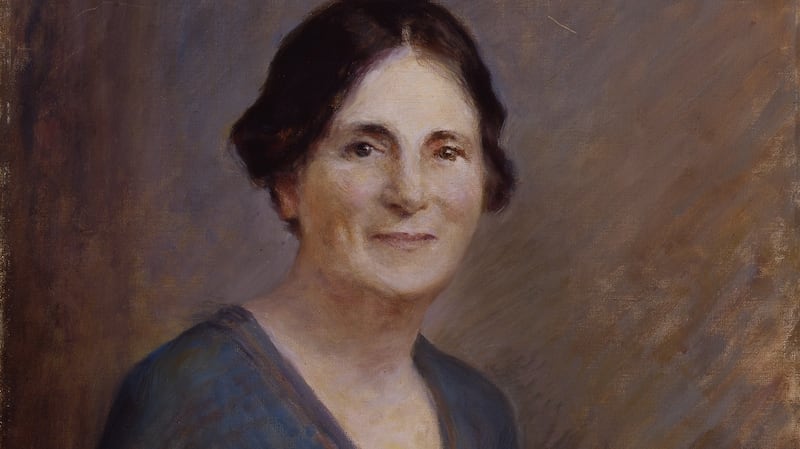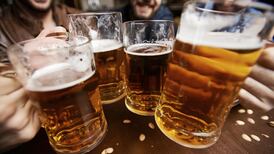For three weeks from Easter Monday 1916, Dr Kathleen Lynn kept a detailed diary of her involvement in the Easter Rising, and her subsequent imprisonment. The chief medical officer for the Irish Citizen Army, Lynn was at the centre of the events and recorded her experiences and feelings in her personal diary. The diaries, now housed in the Royal College of Physicians of Ireland (RCPI) Heritage Centre, Dublin, are now available online, 100 years after they were written.
Kathleen Lynn
Kathleen Lynn was born in Killala, Co Mayo, on January 28th, 1874, the daughter of Robert Lynn, a Church of Ireland clergyman, and his wife Catherine Wynn. She studied medicine at Cecilia Street (the Catholic University Medical School, now UCD) and graduated in 1899. She was refused a position in the Adelaide Hospital because of her gender, but did gain appointments at the Rotunda, Sir Patrick Dun’s and the Royal Victoria Eye and Ear hospitals. She also ran a private practice from her home at 9 Belgrave Road, Rathmines. Lynn is regarded as one of the most dedicated pioneers of children’s health and welfare in Ireland.

In 1913, at the request of Countess Markievicz, she treated Helena Molony. Molony, who was active in a number of political movements, stayed with Lynn in her Rathmines home following an illness. As a result of the influence of Molony and Markievicz, Lynn became an active participant in the suffragist, labour and nationalist movements. “We used to have long talks and she converted me to the National Movement,” Lynn wrote.
Along with Molony and Markievicz, she supported the workers during the Dublin Lockout in 1913, and became a friend and supporter of James Connolly.
Lynn joined the Irish Citizen Army and, at the request of Connolly, taught first-aid to them, as well as to Cumann na mBan. In the week leading up to the Rising, she used her car to run guns into Dublin, storing some at her own house.
The Rising
On Easter Monday 1916, Lynn, as chief medical officer, was sent to City Hall to join the Citizen Army under the command of Sean Connolly. There she witnessed the first casualties on both sides of the Rising. On arrival she "saw the dead body of a big policeman laying on the ground". This was
James O’Brien, a member of the Royal Irish Constabulary who was on guard at the castle, who had been shot by Sean Connolly, on the Citizen Army’s arrival. Not long afterwards, Connolly was himself shot on the roof of City Hall, in front of Lynn. “We suddenly saw him fall mortally wounded by a sniper’s bullet from the castle,” she wrote. “First aid was useless. He died almost immediately.” City Hall was occupied by British soldiers that evening. Lynn was arrested and taken to Ship Street Barracks, later being transferred to Richmond Barracks, Mountjoy and Kilmainham jails.
During the first three weeks of her imprisonment, Lynn kept a daily account of events. The diary was originally written in blue pencil on scraps of paper, presumably all she had while in prison, and were later copied into a bound volume, which Lynn continued to use as a diary until the end of her life.
Lynn’s professional background is clear in her concern about lice, fleas, unsanitary conditions and typhus. She also shows concern for the prisoners’ mental health; stress created by imprisonment and the rumours about the fates of comrades. She comments on the benefits of taking exercise, especially when “allowed to talk, such a comfort”. The entries also show the personal scarifies Lynn made by taking part in the Rising. Coming from a middle-class Protestant background, many of her friends and family could not understand her support of the Rising.
After the Rising
Lynn was kept in custody in Dublin until early June, when she was deported to England. Unlike other prisoners, she was not imprisoned there, but sent to work with a doctor near Bath. Lynn returned to Ireland in the summer for a month to nurse her sister who was ill. By the end of the year, she was back at her home in Rathmines, re-establishing her practice.
Lynn remained active in the Nationalist movement; she was elected vice-president of the Sinn Féin executive in 1917, and a TD for Dublin in 1923, although she didn’t take her seat. In 1919, she co-founded Saint Ultan’s Hospital for Infants on Charlemont Street, providing much needed medical and educational support to impoverished infants and their mothers. Lynn died in Dublin on September 14th, 1955; she was buried in Deansgrange Cemetery with full military honours, in recognition of her part in the Easter Rising.
Extracts from Lynn’s Diaries
Monday 24th April Easter Monday. Revolution. Emer (Helena Molony) and I in City Hall, (Sean) Connolly shot quite early in day. Place taken in evening. All women taken to Ship St about 8.30.
Tuesday 25th April Ship Street Barracks. We objected to lavatory accommodation & heard it was good enough for us, that lice, fleas & typhoid should content us. Another officer had the W.C. cleaned & was quite civil. Had good dinner, same as soldiers.
Monday 8th May Heard 3 shots this morning, told later on Mallin, Ceannt & Colbert had been shot. That makes 7. What other country shoots its prisoners in cold blood! God bless them, they did not fear to die for Ireland.
Tuesday 9th May Heard very pitiful crying, it was Miss (Nellie) Gifford, her brother told her that 2 brothers in law were shot, MacDonagh & Plunkett. Kind matron let me go to her for a little.
Friday 12th May A very black Friday. Fardie & Nan [Lynn’s father and sister] were here, oh, so reproachful, they wouldn’t listen to me & looked as if they would cast me off for ever. How sorry I am for their sorrow! Erin needs very big sacrifices. I am glad they go home to-morrow. Why do they always misunderstand me?
Harriet Wheelock is archivist at RCPI.
The diaries of Dr Kathleen Lynn are available online from Easter Monday. The diaries are also on display in the Royal College of Physicians of Ireland, No 6 Kildare Street, Dublin, as part of a new exhibition: Irish Medicine in War and Revolution. The exhibition, drawing on the historical collections of RCPI, explores the impact of the decade of conflict and turmoil in Ireland, from 1914 to 1923, on the medical profession. See rcpi.ie for more









